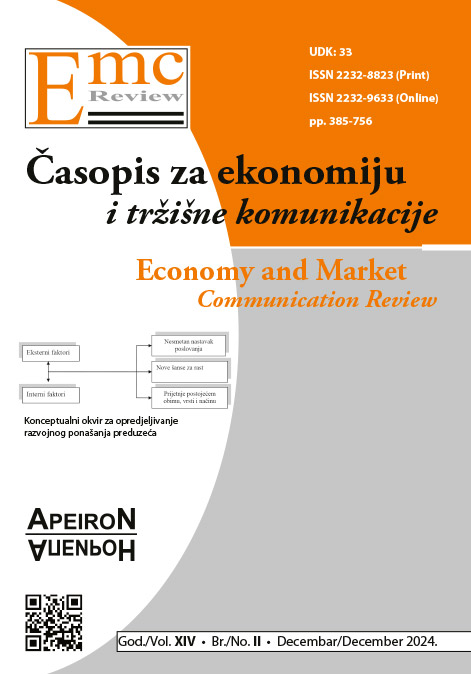SIMULATION MODELS IN THE FUNCTION OF PROGRAMMING OPTIMUM BUSINESS EFFICIENCY FOR THE EXAMPLE OF MANUFACTURING COMPANIES
DOI:
https://doi.org/10.7251/EMC2402580LKeywords:
simulation models, optimal business result, increase in business efficiencyAbstract
The quantitative description of the state of business operations of the company is based on the translation of the problem into an adequate theoretical model, so that through the process of modeling the business system, through management actions aligned with the circumstances in which the business system exists, it becomes a powerful analytical tool for the problems of overcoming insufficient business efficiency. Increasing efficiency is a key motivating element of the change equation in finding a possible solution as a state in which the system, in accordance with the set goal, wants to reach in the future and thereby strengthen the competitive advantage and secure the market position.
Changes in the environment are constant and uninterrupted, and the company is obliged to notice them in a timely manner, adapt to them and respond to them in an adequate way. In accordance with the above, the company sets main and partial goals. Real possibilities and business options are not set by the subjective preferences of management. They are the result of specific mathematical and enmathematical calculations on the basis of which the model is established, which is efficient and flexible enough. Also, one of the important assumptions of the goals is that it must be flexible if it is long-term, due to leaving the possibility of adapting to changes or taking advantage of unexpected opportunities that the environment can provide.
A realistic business environment opens up numerous possibilities of business options, where some of these options enable companies to achieve the desired economic quality, expressed in the form of efficient strategies and set goals. Many real factors show an appropriate connection, which needs to be recognized, quantified and included in an adequate theoretical model that connects business outcomes with the cause or probability of their occurrence, including the mathematical connection of input variables with a possible business outcome. An objective approach in the application of theoretical tools refers to the inclusion of initial assumptions in a quantitative relationship, as a starting assumption of the optimal combination of resources. Therefore, the construction of the model should enable the achievement of management balance through the model correction of available operational resources. New market conditions require an ever wider application of theoretical models with the aim of overcoming the problem of insufficient business efficiency. The results of the research should show that the application of regression analysis of economic functions, simulation and competitive models, as well as mathematical programming models in the specific example enables the company to significantly raise the level of business efficiency through increased profits, more complete utilization of capacity and increased competitiveness. The problems of the business of the mentioned company are contained, primarily, in the insufficient efficiency of the business, which certainly results from the burden of costs of traffic surpluses (stock disposal), especially in cases where the quality of the service is directly expressed by the “freshness” of the items exchanged within the business.
